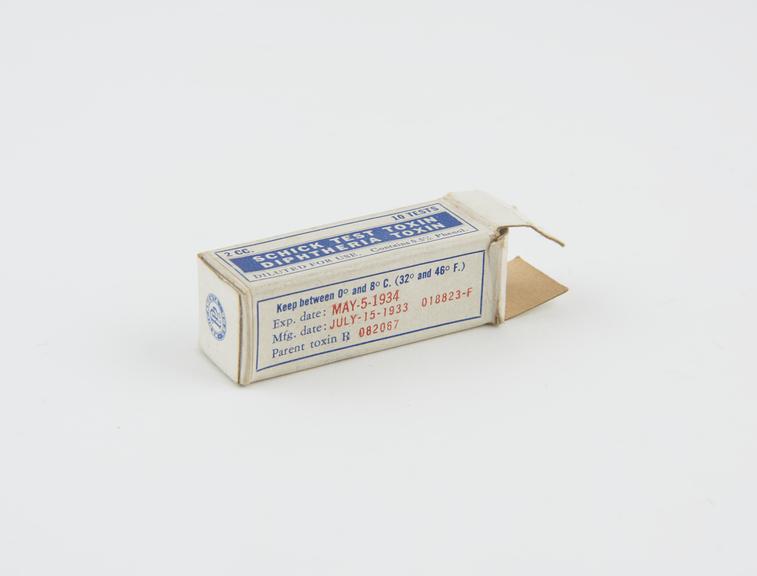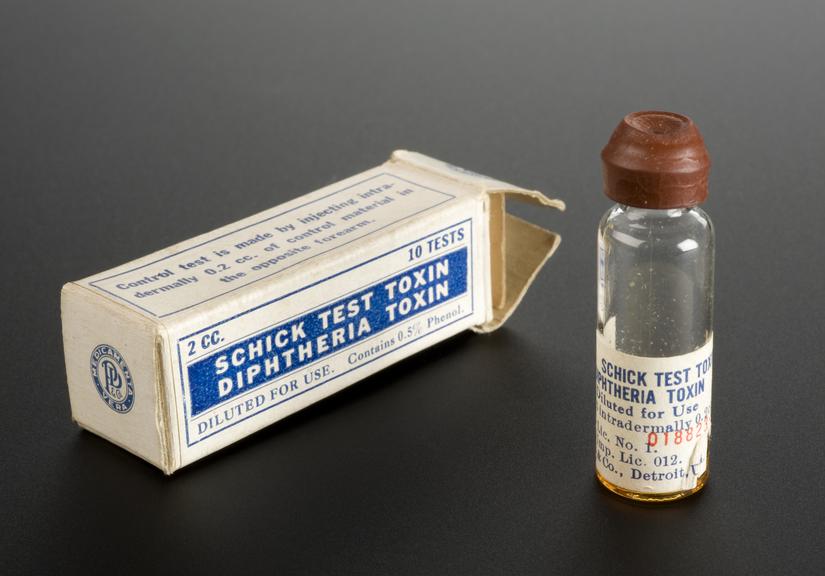
Box containing one vial of Schick Test Diphtheria toxin




Box containing 1 vial of 2 cc Schick Test Diphtheria toxin, manufactured by Parke Davis & Co, 1933
Diphtheria is a contagious and potentially deadly upper respiratory tract infection. It especially affects children. This tiny glass vial contains enough diphtheria toxin to test ten individuals for their susceptibility to the disease. The test is known as a Schick test after its inventor, paediatrician Béla Schick (1877–1967). It involved injecting a tiny amount of toxin just under the skin. If the body does not have enough antibodies to fight the toxin it reacts by producing a raised red mark. This warned the doctor the patient was at risk and should be given an immunisation injection.
In 1883, German bacteriologist Edwin Klebs (1834–1913) discovered the bacterium which causes diphtheria. This was isolated the following year by fellow researcher Friedrich Loeffler (1852–1915). It meant the bacteria could be tested for and used to diagnose infection. Diphtheria has been a notifiable disease since 1889, meaning all cases must be reported and recorded for government statistics. It was once a notable killer, but is now rare in the UK because of routine childhood vaccination. This diphtheria toxin was manufactured by American firm Parke Davis and Company.
Details
- Category:
- Public Health & Hygiene
- Object Number:
- 2008-48
- Measurements:
-
overall: 60 mm x 20 mm x 20 mm,
- type:
- diphtheria test
- credit:
- Harrogate and District NHS Foundation Trust



